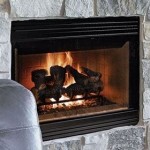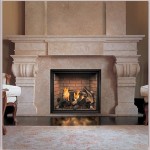Can You Cover a Marble Fireplace Surround With a Wood Effect?
Many homeowners appreciate the classic elegance of a marble fireplace surround. However, tastes and trends evolve, and some may find themselves yearning for a cozier, more rustic aesthetic. This often leads to the question: can you cover a marble fireplace surround with a wood effect? The answer is a resounding yes, with several methods available to achieve the desired transformation.
Method 1: Wood Cladding
Wood cladding offers a straightforward and effective way to cover a marble fireplace surround. This involves attaching thin pieces of real wood, often in the form of planks or panels, directly onto the marble surface. The wood can be stained or painted to achieve the desired wood effect, from a light oak to a rich mahogany. This method provides the genuine texture and warmth of real wood, adding a significant layer of rustic charm to the fireplace.
Before installation, the marble surface should be thoroughly cleaned and primed to ensure proper adhesion. It's crucial to use a primer specifically designed for non-porous surfaces like marble. Depending on the type of wood cladding chosen, it can be attached using construction adhesive, screws, or a combination of both. This method can be relatively simple for DIY enthusiasts with basic carpentry skills.
Method 2: Faux Wood Panels
For a less labor-intensive option, faux wood panels offer a convincing wood effect without the complexities of working with real wood. These panels are typically made from materials like MDF or PVC and are designed to mimic the appearance of wood grain. They come in a wide range of styles and colors, allowing for flexibility in achieving the desired aesthetic.
Faux wood panels are lightweight and easy to install, often requiring only construction adhesive or double-sided tape. They offer a cost-effective solution, especially for large fireplace surrounds. While they lack the genuine texture of real wood, modern faux wood panels have become remarkably realistic in their appearance, providing a convincing alternative.
Method 3: Wood-Effect Veneer
Wood veneer provides another avenue for achieving a wood effect over marble. This method involves applying thin sheets of real wood to the marble surface using a specialized adhesive. Wood veneer offers the authentic look and feel of solid wood at a fraction of the cost and weight. It’s available in a wide variety of wood species, allowing for precise customization of the desired finish.
Applying wood veneer requires precision and patience. The marble surface must be meticulously prepared to ensure a smooth and even application. The veneer sheets are carefully positioned and adhered to the marble, then trimmed and finished to create a seamless look. This method might be best suited for experienced DIYers or professional installers.
Method 4: Faux Wood Beams
While not covering the entire marble surround, incorporating faux wood beams can dramatically alter the fireplace's appearance. These beams, often made from polyurethane or other lightweight materials, can be installed around the existing marble frame to create a mantel-like structure. This offers a cost-effective way to introduce a wood element without completely concealing the marble.
Faux wood beams are available in various sizes and finishes, allowing for customization to complement the existing décor. They are easy to install, typically requiring only construction adhesive and finishing nails. This method provides a less permanent solution, offering flexibility for future design changes.
Method 5: Paint Techniques
For a truly budget-friendly option, paint can be used to create a faux wood effect directly on the marble surface. This requires a skilled hand and several specialized painting techniques, including graining and layering, to mimic the appearance of wood grain. While this method doesn’t offer the texture of real wood, it can achieve a surprisingly realistic visual effect.
Before painting, the marble surface must be properly prepared, cleaned, and primed to ensure proper paint adhesion. Several layers of paint are typically applied, utilizing different shades and techniques to create the illusion of wood grain. A protective sealant should be applied after the paint has dried to protect the finish and enhance durability.
Considerations Before Covering
Before undertaking any of these methods, it's essential to consider the existing fireplace design, the desired aesthetic, and the budget. Each method offers a different balance of cost, complexity, and realism. Careful planning and preparation are crucial for a successful outcome.
Furthermore, it’s important to assess the condition of the existing marble. Any cracks or damage should be repaired before covering the surface. Additionally, consider the heat output of the fireplace and choose materials that are appropriately heat-resistant.

Easy Diy Marble Hearth And A Fireplace Makeover The Painted Hive

Marble Fireplace Makeover Centsational Style

How To Re Clean Marble Fireplaces The Fireplace Studio

How To Cover A Brick Fireplace With Wood Stone Nina Hendrick Home

Faux Marble Fireplace Savvy Apron

How To Tile Over A Marble Fireplace Surround Porch Daydreamer

How To Paint A Marble Fireplace Surround With Chalk

Coastal Family Room And Fireplace Makeover Sand Sisal

Our 200 Marble Fireplace Makeover Young House Love

Painting Marble Fireplace Mumsnet








